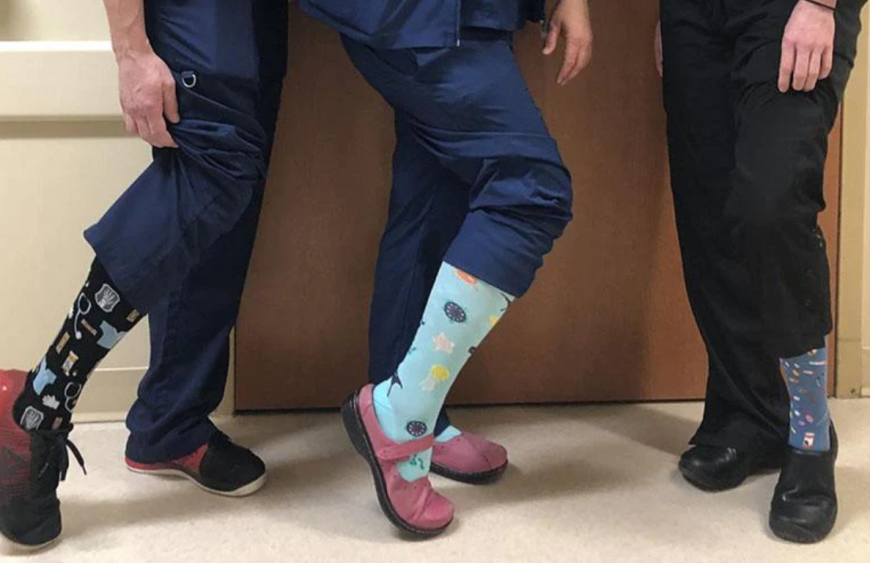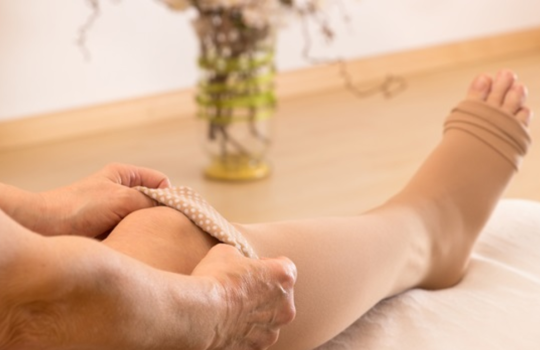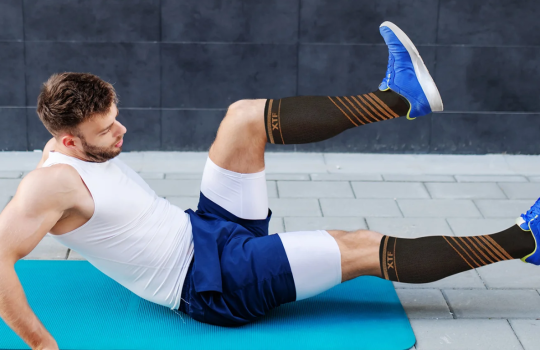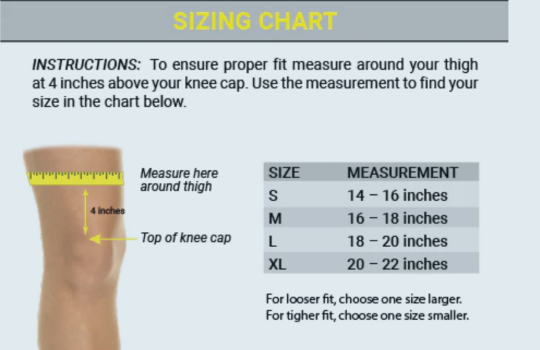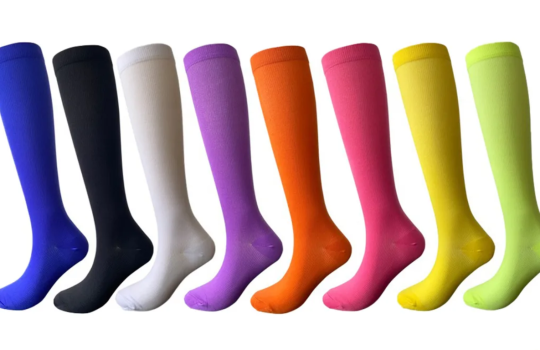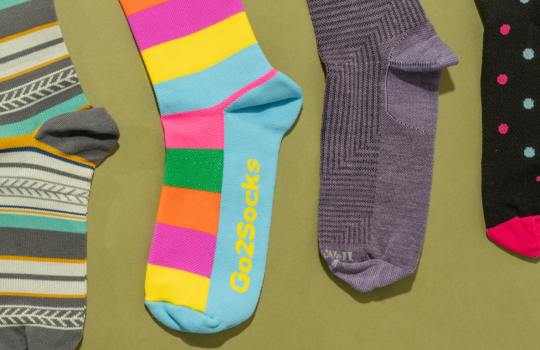Nurses understand that the difficulty of their work is considerable. You stand, walk and lift for extended periods, subjecting your legs to significant strain that may cause discomfort, bruising and exhaustion – with increased chances of varicose veins, blood clots or other cardiovascular problems resulting from standing, walking, or lifting duties.
That’s why many nurses wear compression socks. Compression socks for nurses are specially designed socks that apply gentle pressure to your legs, improving blood flow and reducing swelling. Compression socks can also help prevent varicose veins, which are enlarged and twisted veins that can cause pain and discomfort.
But not all compression socks are created equal. Different types of nursing compression socks offer different levels of pressure and support. Some compression socks for nursing are graduated, applying more pressure at the ankle and less at calf. This helps push blood up leg and prevent pooling. Other compression socks are non graduated, meaning they apply the same pressure throughout portion. This can help with general comfort and stability.
So how do you choose the best compression socks for nurses? Based on customer feedback and qualities like quality, we’ll review some of best compression socks for nurses currently on the market in this blog post. We’ll also advise on how to use compression socks and characteristics to look for when choosing a pair.
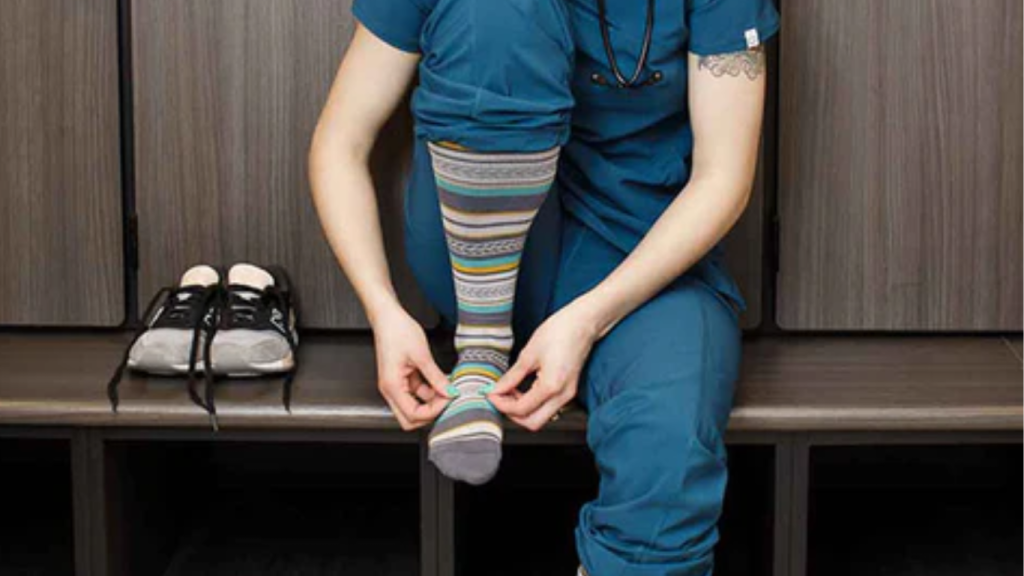
Best Compression Socks for Nurses
Here are some of the best compression socks for nurses that you can find online:
Bombas Women’s Everyday Compression Socks: These socks are crafted from soft and breathable cotton to wick away moisture, keeping your feet dry and comfortable. With seamless toe and cushioned foot bed design for extra comfort. Additionally, a honeycomb arch support system hugs your foot for ultimate support without slipperiness – ideal for mild-moderate swelling and fatigue relief. With every pair purchased from Bombas, they donate one pair directly to society! Plus, every purchase donates one more pair back into circulation!
FIGS Nurse Compression Socks: These socks are made of antimicrobial fabric to combat odor and bacteria growth. With reinforced heel and toe for durability and ribbed cuff for snug-fitting, these socks offer 20-30 mmHg of graduated compression, ideal for moderate to severe swelling or fatigue. These funky socks are available in various colors and sizes with designs like hearts, stars, stripes, etc. and these are great additions to your everyday wear!
Sooverki Nurse Compression Socks: These socks are constructed of nylon and spandex fabric for flexibility and breathability, featuring smooth toe seams and cushioned heels to offer comfort. Their graduated compression range ranges between 20-30 mmHg for moderate to severe swelling or fatigue; these colorful patterns include flowers, dots, stripes and more! They’re available in multiple colors and sizes with designs like flowers, dots and stripes that give a pop of color!
Doc Miller Calf Nurse Compression Socks: Nylon and spandex make these socks, which give flexibility and breathability. For comfort, they offer a cushioned heel and a seamless toe seam. They provide progressive compression of 20–30 mmHg for moderate to severe weariness and edema. They come in various hues and sizes, covering the entire calf region to add additional support and security.
Clove Nurse Compression Socks: These bamboo rayon socks provide softness and moisture-wicking properties for maximum comfort, with seamless toes and cushioned footpads for added cosines. Offering 15-20 mmHg graduated compression, suitable for mild to moderate swelling and fatigue, these socks come in various colors and sizes with subtle designs such as stripes, dots or solid colors for additional style options.
VIM & VIGR Graduated Nurse Compression Leg Sleeves: These sleeves are made from nylon and spandex, providing elasticity and breathability. They have a smooth toe seam and a cushioned heel for comfort. They offer 15-20 mmHg of graduated compression, ideal for mild to moderate swelling and fatigue. They come in various colors and sizes, covering entire calf region to add additional support and security. They don’t cover foot area like socks, so you can wear them with any shoes you like.
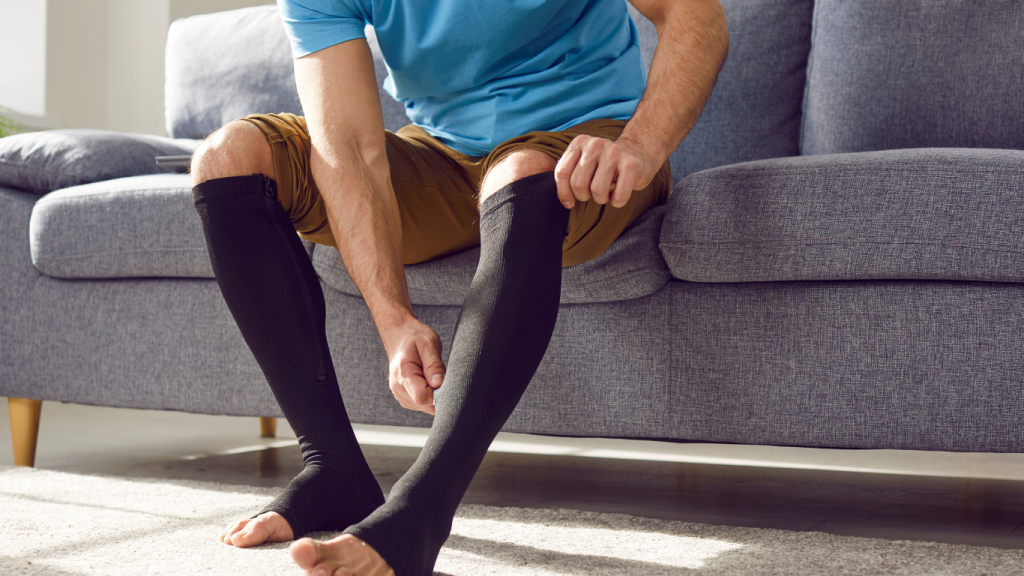
What to Look for When Choosing Compression Socks for Nurses?
When choosing compression socks for nurses, there are some features that you should consider:
Compression level Compression Socks for Nurses
The amount of pressure socks put on your legs is referred to as compression level. Mercury (mmHg) millimetres are used to measure it. The stockings exert more pressure when mmHg is higher. The compression level you need depends on your symptoms and preferences.
Generally speaking,
15-20 mmHg is suitable for mild to moderate swelling
and fatigue;
20-30 mmHg is ideal for intermediate to severe swelling
and fatigue.
30–40 mmHg is suitable for severe swelling, fatigue, or medical conditions such as deep vein thrombosis (DVT) or lymphedema.
Before selecting a compression level greater than 20 mmHg, you should speak to a medical practitioner because it cannot be secure or pleasant.
Fabric type of Nurse Compression Socks
The fabric type refers to material that socks are made from. The material choice affects socks’ comfort, breathability, durability and aesthetics; common fabric types include cotton, nylon, spandex, bamboo, wool and polyester. You should select a fabric type that best meets your skin type, climate and personal preferences: cotton tends to be soft and breathable while not very durable or moisture-wicking; nylon or spandex may not feel very natural and durable but still be elastic; bamboo moisture-wicking but not very elastic or durable; wool is warm yet natural while not always ideal in hot climates while polyester is durable moisture-wicking yet may not feel soft or natural for instance, cotton is soft yet not very moisture wicking.
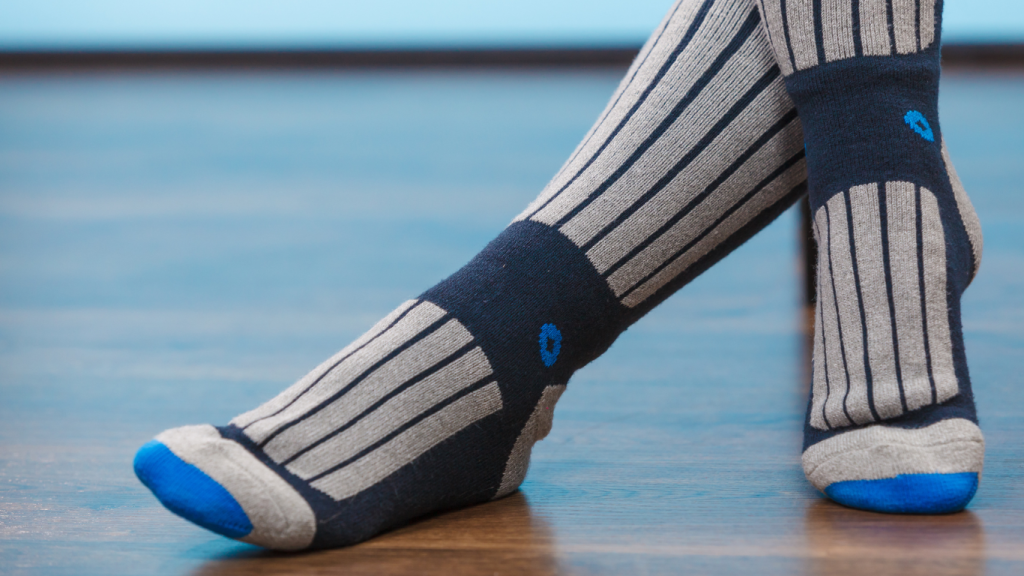
Fit of Nurse Compression Socks
The fit refers to how well socks conform to your legs and feet. Fit is crucial when selecting socks. Achieve comfort, effectiveness and appearance by selecting socks that provide snug yet not over-tightened or loose fitting fits; too tight may restrict blood flow resulting in discomfort or damage; too loose can slip down and lose their compression effect. Measure leg circumference around ankle and calf before purchasing socks to compare against size chart of those you plan on buying; additionally, try on socks before wearing for long to ensure proper fitting before long term wearing.
As you’ve learned about the importance of compression socks and their benefits for nurses, there’s even more to explore. Discover the key role that fabric plays in compression sock comfort and effectiveness in our comprehensive guide on the best fabric for compression socks.
How Much Do Compression Socks for nurse Cost?
You can find compression stockings at several price points. Expect to spend at least $10 a pair. Higher compression and more specialized stockings (such as ones that include unique grip tops or are made of fashionable fabric) can exceed $100. You can find compression socks at online retailers, pharmacies, medical supply stores and stores focusing on comfort footwear.
Tips for Wearing Nursing Compression Socks
Here are some tips for wearing Nurse compression socks:
Start with a lower compression level and gradually increase it as needed. This will help your legs adjust to pressure and prevent discomfort or injury.
At least 12 hours of wear a day will maximize the effectiveness of compression socks and help minimize swelling and fatigue from building up.
Take your socks off at night to allow your legs to rest. This will help prevent overcompression and improve blood circulation.
Wash socks regularly according to instructions on label. This will help maintain socks’ hygiene, elasticity and effectiveness.
Replace socks every 3 to 6 months or when they show signs of wear and tear. This will help ensure that you get optimal compression and support from the socks.
Conclusion
Compression socks relieve blood flow and prevent problems like varicose veins. The blog post reviews top options, emphasizing fabric, fit and compression levels. Proper usage, including gradual adjustment and regular washing, ensures effectiveness. By making intelligent choices and following best practices, nurses can prioritize their well being while mitigating some of the challenges inherent to their profession.
Nursing involves:
- Taxing activities that strain lower limbs
- Increasing risk of discomfort.
- Swelling.
- Cardiovascular issues.
Visit our website to see broad selection of premium compression socks available at low prices if you want to purchase socks for nurses.
Don’t wait any longer. Order your compression socks today and enjoy benefits of better leg health and comfort!

